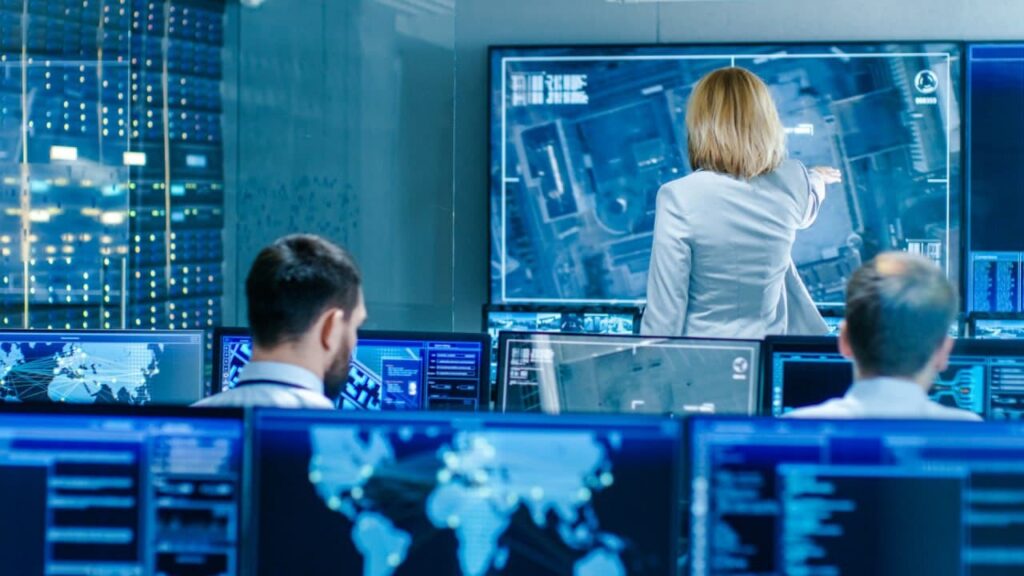
Investigation of events using video surveillance
Investigation of events using video surveillance
In 2010, thanks to video cameras at the stations “Lubyanka” and “Park Kultury” (Moscow), the persons responsible for the terrorist attacks on March 29 were found. Two months later, a terrorist attack in Times Square (New York) was prevented in the United States. This was facilitated by the vigilance of ordinary citizens, prompt police intervention and a video surveillance system operating on site.
In fact, the largest share of crimes, offenses and controversial situations in the world are investigated using video surveillance, but the information is not advertised. Let’s talk about the benefits and challenges of investigating events using video cameras.
Historical background
The leading countries in the use of video surveillance are the USA, China and the UK. And it is Great Britain that is the parent of modern video surveillance installed on the streets to investigate crimes.
The beginning was laid in the middle of the last century, when the first cameras were installed at major crossroads in England.
And the impulse for the massive introduction of video surveillance in the world was the loud kidnapping of a boy (J. Bulger) in Liverpool in 1993. Thanks to the cameras installed at the entrance of the Liverpool shopping center, the whole world saw the image of the kidnappers. The criminals were identified, but the boy died.
Today in England there are no less than 5 million cameras installed by the state. If we take into account all the video surveillance systems that are installed privately, then on average, during the working day, every resident of London comes into the field of view of three hundred cameras.
Role of video surveillance in incident investigation
Video surveillance is used as an effective tool in the investigation of incidents:
- crimes and offenses in the course of operational-search activities. Recordings from cameras help to identify biological, psychological, social characteristics of a person, as well as identify them by the color and type of clothing, car, etc.;
- offenses and accidents committed with the help of motor vehicles. In this case, the license plate recognition function helps;
- investigation of industrial accidents;
- settlement of controversial situations (theft, violation of regulations) in various areas of business;
- investigation of events of an interpersonal nature (for example, between neighbors about the behavior of pets).
In addition, working video cameras is an important preventive tool that helps reduce the number of negative incidents. Read the article “Predictive analytics in video surveillance. Principles, objectives, opportunities”.
Essential aspects for a quick case investigation
When analyzing an event recorded on a video surveillance camera, the following aspects play an important role:
- Technical capabilities of face recognition and personality identification. It also takes into account the intellectual capabilities of maintaining lists and quickly searching for photos in the archive. Are you wondering if there is a video camera with face recognition? Yes, the information is here.
- Technical capabilities for recognizing objects and their identification. In addition, it is important to determine the dimensions and sizes of objects that are in the frame, in the hands of a person.
- Availability of functionality for determining the speed characteristics of a vehicle (used in traffic police cameras).
- Identification of interference with video recording. Have changes been made to the recording? Are there any signs of editing?
- Possibilities of reliable data storage and their recovery from the hard disk. To avoid accidental and/or intentional loss of the video archive, experts recommend using cloud storage. In this case, interference with the archive is excluded.
Factors that negatively affect the resolution of cases
Unfortunately, video surveillance is not always helpful for investigation. There are a number of reasons:
- Poor video quality due to:
- low resolution of the equipment used;
- blurred images, (weather conditions, for example);
- poor contrast and color settings;
- range and height of the camera;
- bad focus and filming angle.
- Violation of applicable law. We are talking about the violation of human rights and freedoms, illegal installation of a camera.
- Expert refusals. For a number of reasons, a video recording may not be accepted as evidence. For example, if the video recorder does not contain markings (model, series) and there are no documents from manufacturers. Or if the data was stored in violation of the rules. Also, the video will not be able to help in the investigation if the expert establishes traces of interference and changes in the video materials.
Conclusion
Video surveillance, investigation of disputable situations, conflicts and offenses can work in one bundle. At the same time, the owner of the system needs to take care of the competent organization of video monitoring, rules for data security and high image quality. For business, in order to ensure security and optimize work processes, it is recommended to use video surveillance with elements of intelligence.














